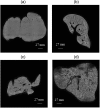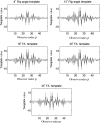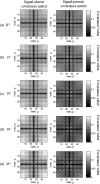Task-based optimization of flip angle for fibrosis detection in T1-weighted MRI of liver
- PMID: 27446971
- PMCID: PMC4955011
- DOI: 10.1117/1.JMI.3.3.035502
Task-based optimization of flip angle for fibrosis detection in T1-weighted MRI of liver
Abstract
Chronic liver disease is a worldwide health problem, and hepatic fibrosis (HF) is one of the hallmarks of the disease. The current reference standard for diagnosing HF is biopsy followed by pathologist examination; however, this is limited by sampling error and carries a risk of complications. Pathology diagnosis of HF is based on textural change in the liver as a lobular collagen network that develops within portal triads. The scale of collagen lobules is characteristically in the order of 1 to 5 mm, which approximates the resolution limit of in vivo gadolinium-enhanced magnetic resonance imaging in the delayed phase. We use MRI of formalin-fixed human ex vivo liver samples as phantoms that mimic the textural contrast of in vivo Gd-MRI. We have developed a local texture analysis that is applied to phantom images, and the results are used to train model observers to detect HF. The performance of the observer is assessed with the area-under-the-receiver-operator-characteristic curve (AUROC) as the figure-of-merit. To optimize the MRI pulse sequence, phantoms were scanned with multiple times at a range of flip angles. The flip angle that was associated with the highest AUROC was chosen as optimal for the task of detecting HF.
Keywords: MRI; hepatic fibrosis; hotelling observer; liver; magnetic resonance imaging; optimization; texture analysis.
Figures









References
Grants and funding
LinkOut - more resources
Full Text Sources
Other Literature Sources
Research Materials
Miscellaneous

